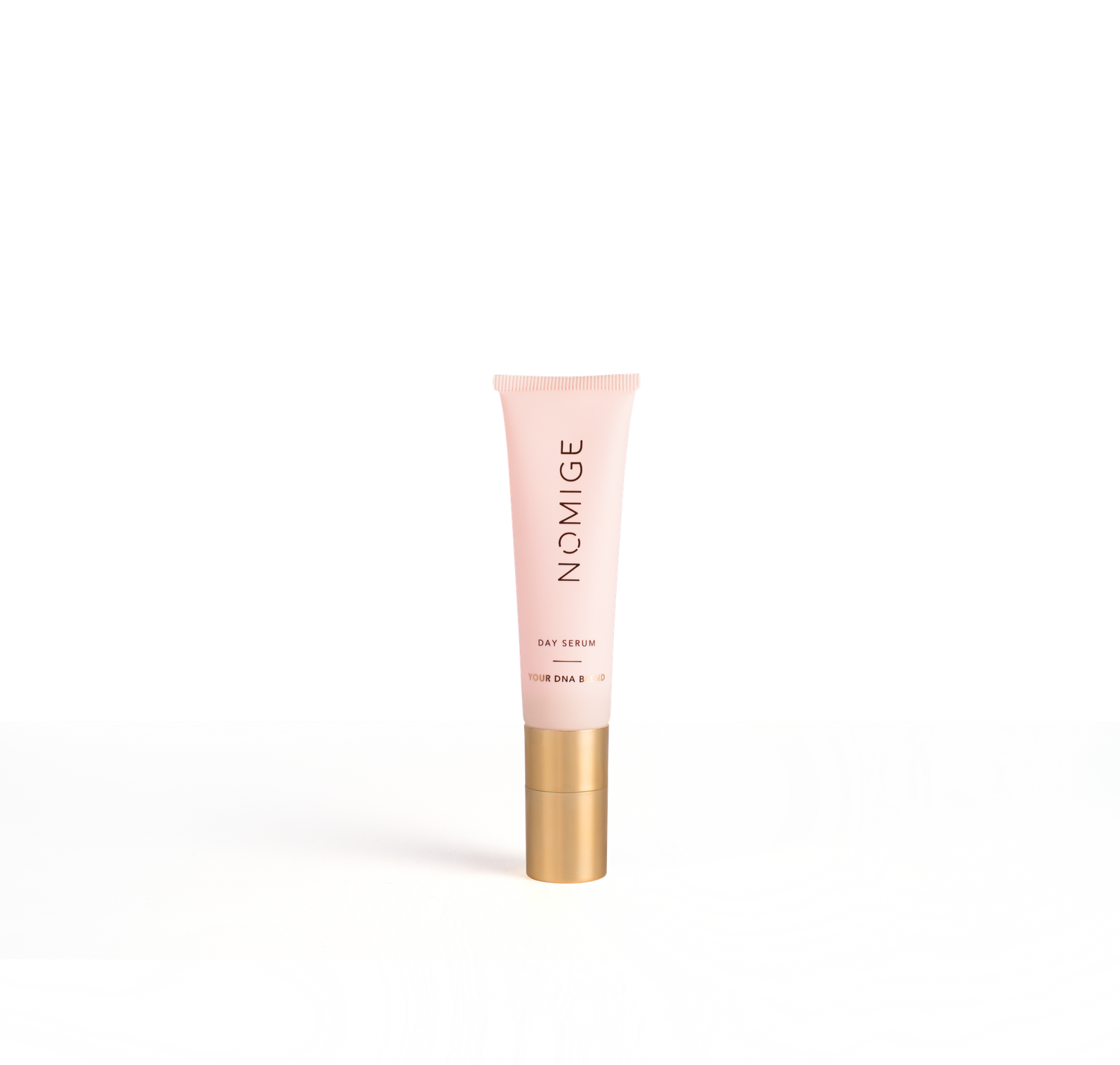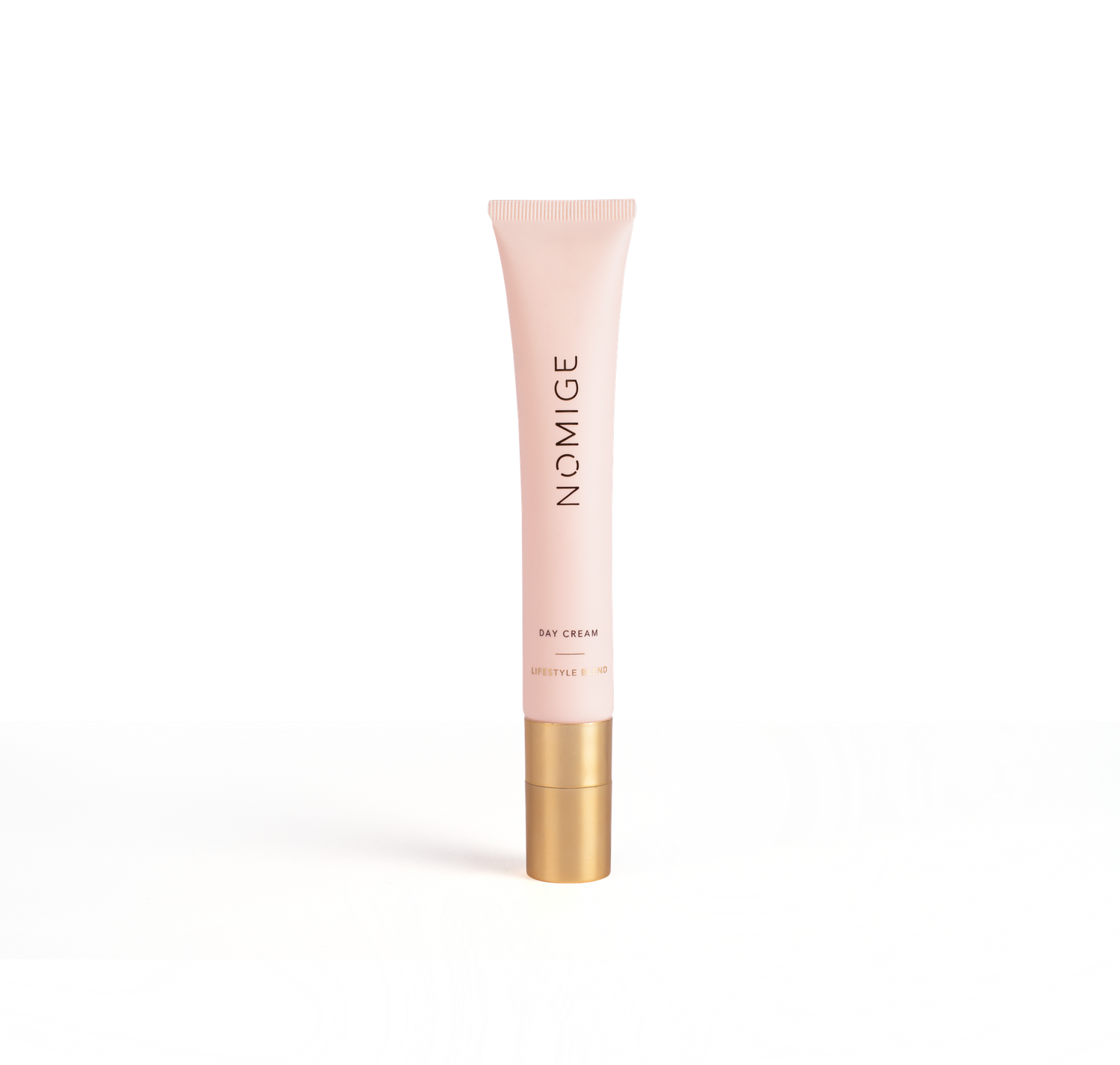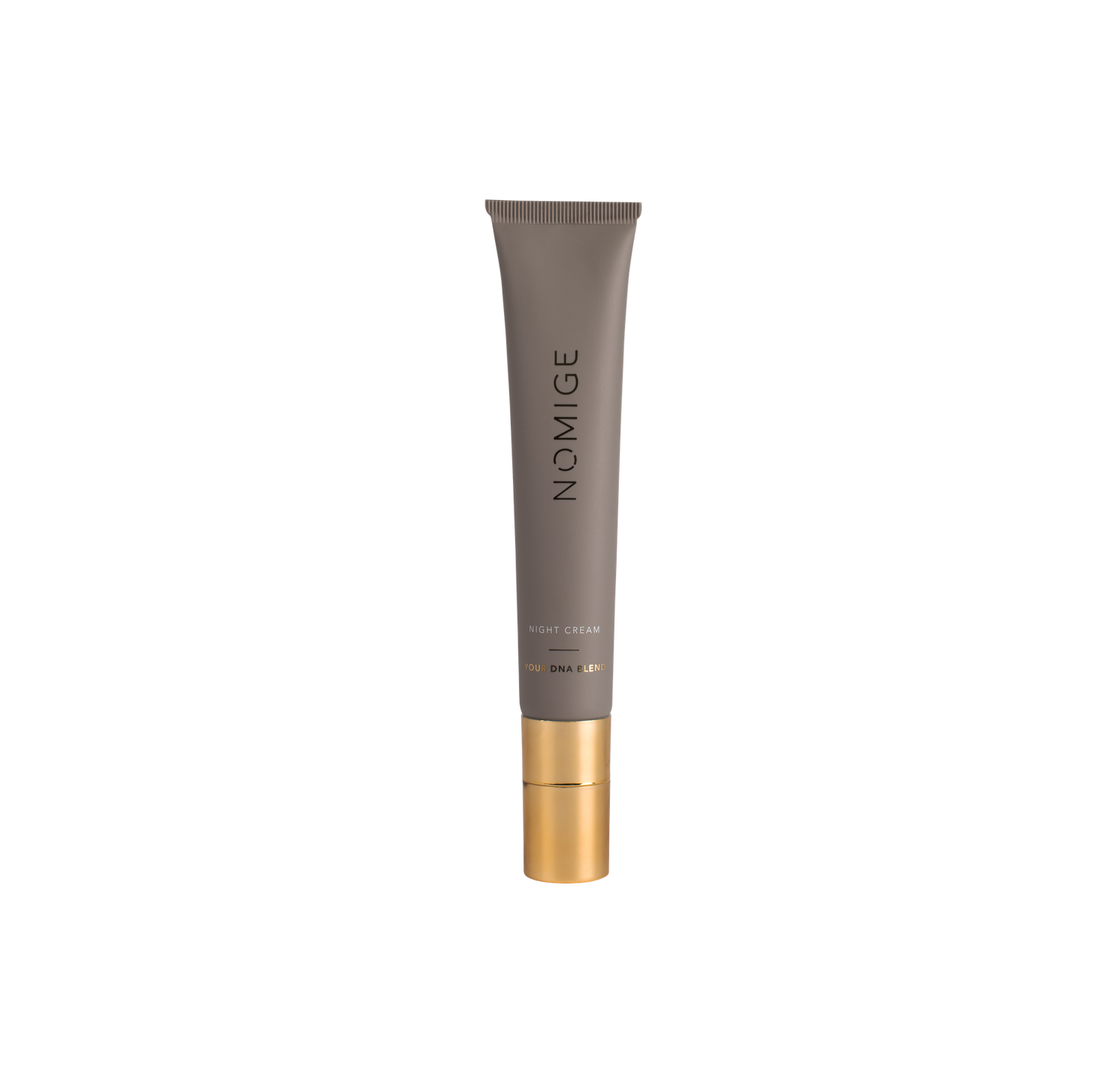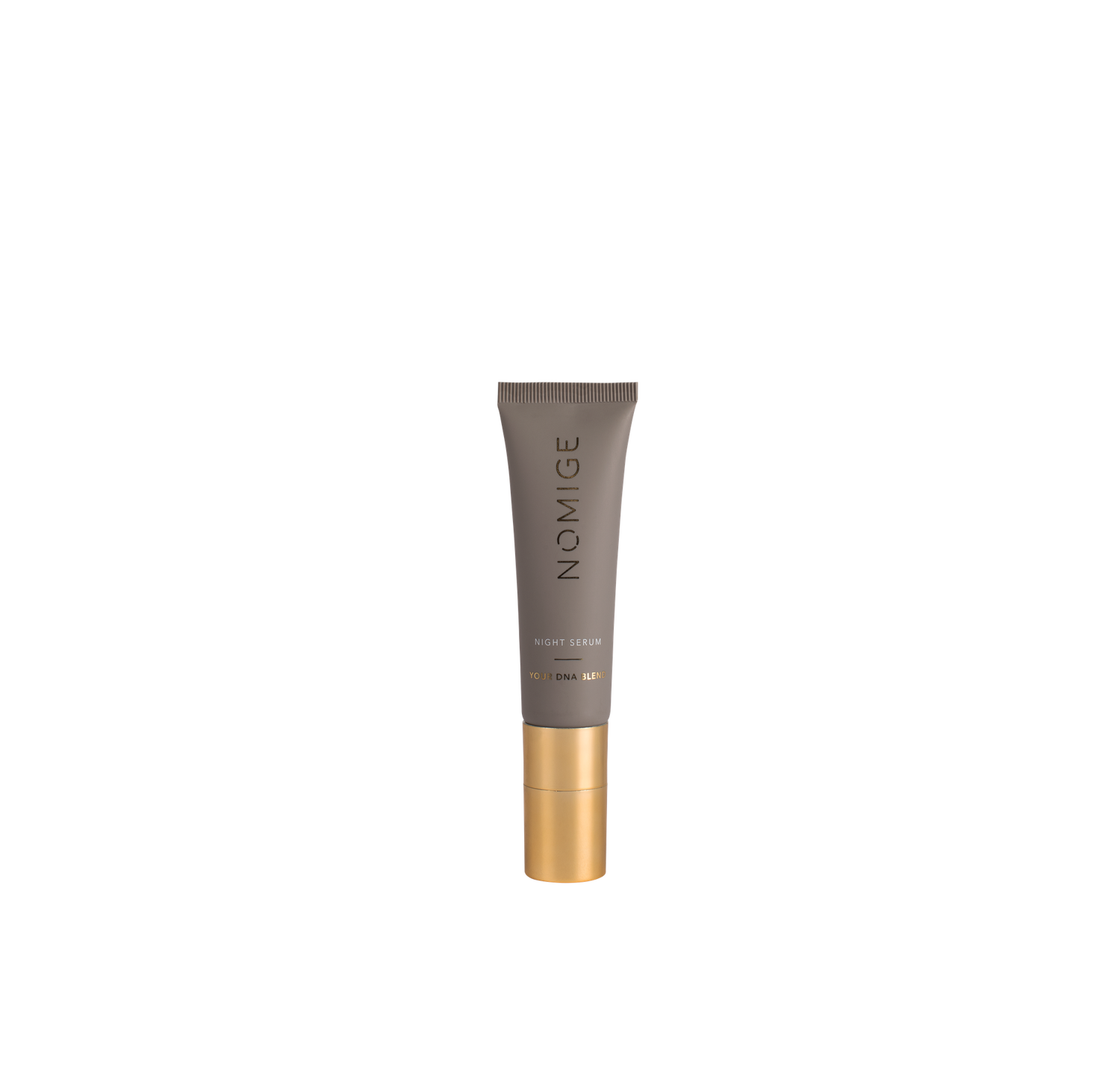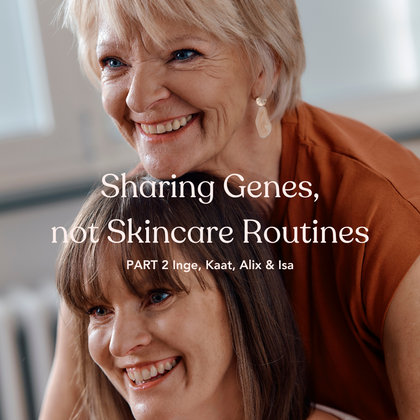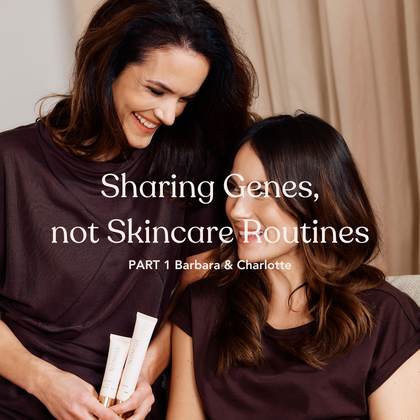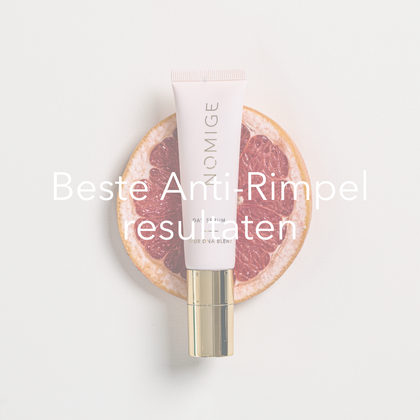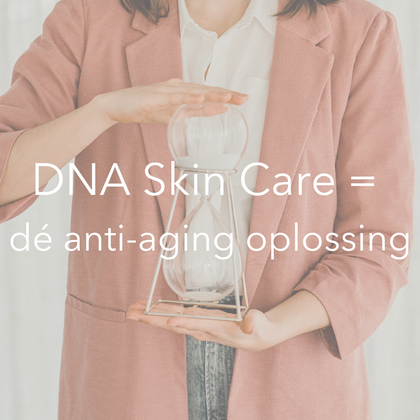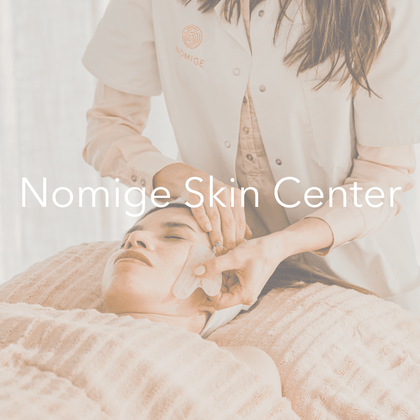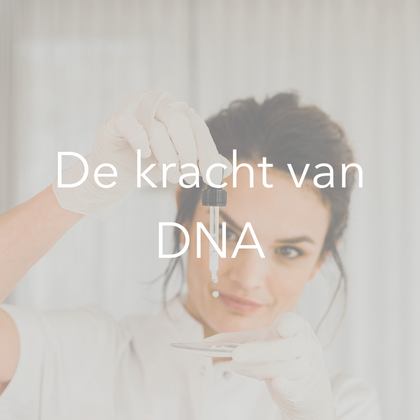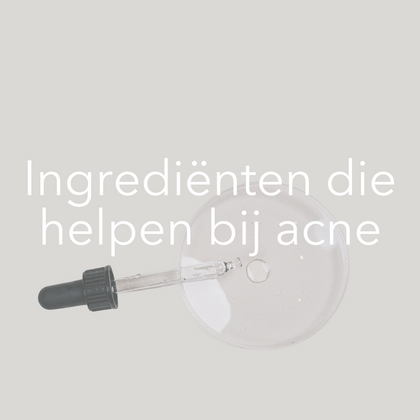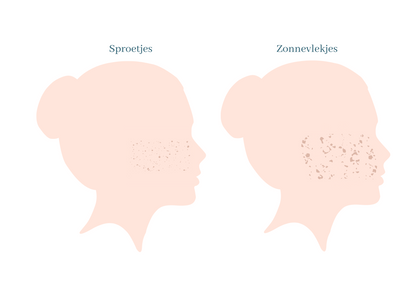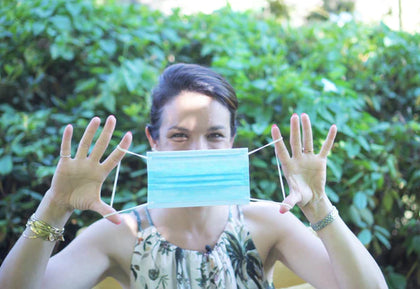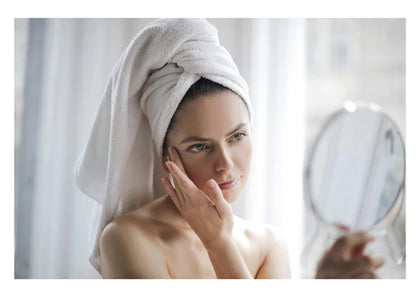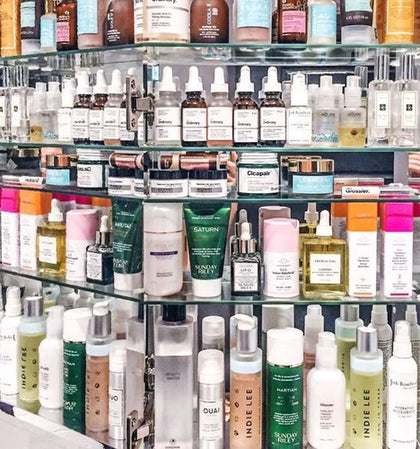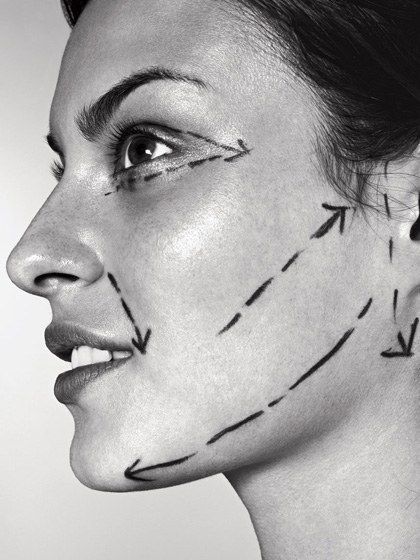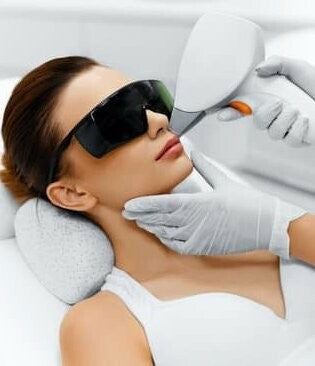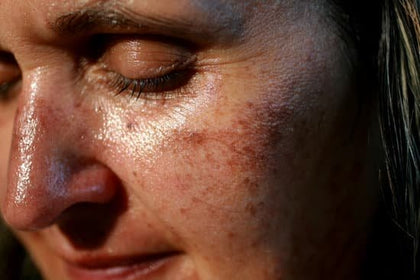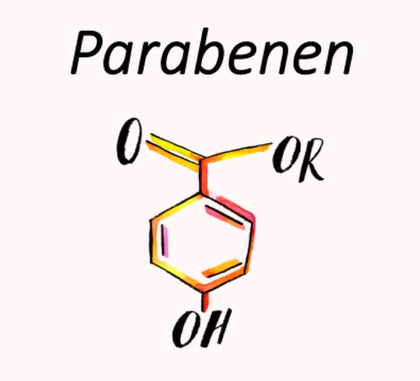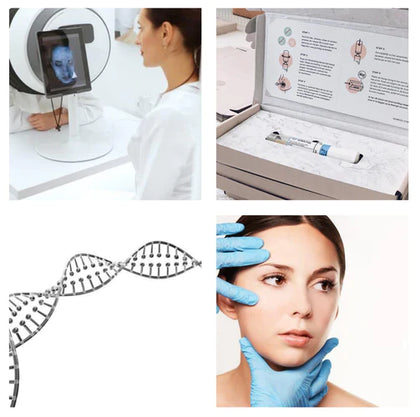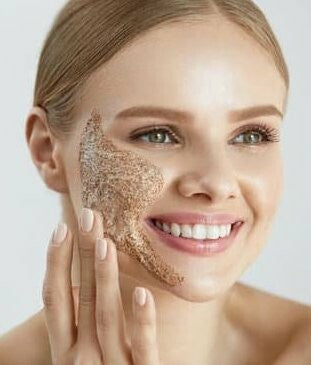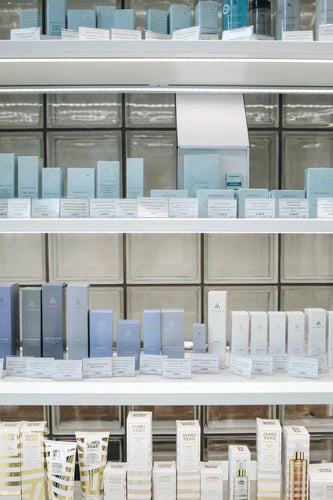The science behind Nomige
Nerd Alert!
In this blog we take a closer look at the scientific foundations on which Nomige's concept is built. This presentation provides an overview of the published literature in renowned peer-reviewed journals, such as those found on MEDLINE and PubMed.
INTRODUCTION
As everyone ages, scientists are trying to understand the molecular and physiological events involved in the skin aging process . Skin changes are one of the most visible signs of aging and have gained more attention in a society that values youth and beauty. 1 The term 'perceived age' refers to the estimated age of a person, what this person looks like, in relation to his or her chronological age. This concept has implications beyond aesthetics: perceived age is a robust biomarker of aging that predicts survival in certain groups of patients 2 and correlates with key functional and molecular aging phenotypes. 3


Research on same-sex twins suggests that up to 60% of the variation in observed age is influenced by genetics , while the remaining 40% can be explained by non-genetic factors . 3,4 Among the latter , smoking, pollution and sun exposure are the environmental factors of major importance for premature skin wrinkling or facial aging . 5
Ethnicity and gender are clear evidence of genetic influence on skin aging . Wrinkles in Asians tend to appear later and less 'sharply' than in Caucasians, 6 while another study shows that skin dryness is higher in African-American and Caucasian women. 7 The most explicit difference between ethnic groups is that people with a darker skin color are more likely to retain younger skin characteristics. 8 Physiological differences between men and women also point to the role of genetics in skin aging. For example, male skin is more sensitive to harmful external influences, especially exposure to ultraviolet light. 9
The combination of intrinsic (from the inside) and extrinsic (from the outside) factors are ultimately responsible for accelerated skin aging . Significant changes in biological processes that drive skin aging are oxidative stress, lack of elasticity and reduced hydration. 11 Oxidative damage can occur, for example, as a result of exposure to the sun and the formation of free radicals. These have a negative impact on the firmness of the skin . And due to a deficiency of lipids that are part of the skin's structure, the skin suffers severe water loss , making wrinkles much more visible.

Human genome sequencing and subsequent developments in genomics have provided new tools to investigate these factors at the molecular level. 12 Single nucleotide polymorphisms (SNPs) are mutations or genetic variations that occur when individual bases in genes are changed or deleted, which can result in an amino acid change at a specific position and a change in phenotype . Numerous physiological states are correlated with the occurrence of SNPs in specific genes in a human's genome.
SNPs are also associated with skin functions. Han et al. identified novel SNPs associated with skin pigmentation and hair color. 13 Also, a genome-wide association study showed the role of STXBP5L gene variants in photoaging or the association of mutations in genes encoding antioxidant response with a predisposition to higher oxidative stress. 14
CHARACTERIZATION OF SKIN AGING AT THE GENE AND PROTEIN LEVEL
Older skin is characterized by dehydration, loss of elasticity and increased oxidative damage, among other things. 10,11 These three main skin properties were selected because they are strongly related to known metabolic pathways and because many other visible skin properties such as wrinkle lengthening and depth can be attributed to one of these three (in this case, wrinkles can be attributed to loss of elasticity and collagen metabolism).

Through an extensive literature search, we characterized genes encoding proteins involved in skin hydration, skin elasticity and antioxidant capacity of the skin. We then further identified which proteins have SNPs in their genes that influence (in a negative way) the corresponding expression or functionality of the protein product. The following proteins were selected: matrix metalloproteinase-1 (MMP-1), 15 superoxide dismutase II, 16,17 glutathione peroxidase , 18 matrix metalloproteinase-3 (MMP-3), 19 fillagrin 20 and aquaporin-3, 21 .
The MMP genes

Sandwiched between the epidermis and the hypodermis is the dermis. The dermis contains blood vessels that nourish the skin, and structural proteins such as collagen that strengthen the skin. As we age, collagen production decreases. But in some people with a SNP in MMP-1 or MMP-3, collagen is broken down faster than others because the mutation in these genes causes increased expression of MMP. 15.17
Scientific research on dermagenetics suggests that different skin care needs depend on the polymorphism of that person. 22 Skincare products for people with higher levels of collagen loss should be more concentrated in collagen-enhancing ingredients and actives that help reduce the activity of MMP enzymes. 23, 24, 25
Antioxidants
Free radicals are highly reactive molecules that can harm any structure in our body. They are created by factors such as pollution, smoking, sun exposure, etc. Skin damage from free radicals can come in various forms, such as changes in skin color (broken blood vessels and dark spots), wrinkles & aging due to collagen and elastin damage .
A good way to prevent these free radicals from damaging your body is to consume enough antioxidants through foods or supplements, but the reality is that the most powerful antioxidants are found in your own body. 26 The GPx-1 gene (encoding Glutathione peroxidise) and the SOD2 gene (encoding Superoxide Dismutase2) are among the strongest antioxidants available in the human body. DNA variations alter (reduce) the production of these powerful natural antioxidants, weakening the natural antioxidant capacity and making it more susceptible to external stressors. 27, 28 Topical supplementation of the respective actives therefore has a beneficial and proven effect on the skin. 29, 30

Hydration

Aquaporin-3 (AQP3) is a protein, encoded by the AQP3 gene, that forms pores in the membrane of biological cells that allow water to flow into the cell faster than by diffusion through the membrane itself. Aquaporin-3 selectively conducts water molecules and glycerol in and out of the cell, while preventing the passage of ions and other solutes. AQP3 acts as a glycerol transporter in the skin and plays an important role in regulating stratum corneum (SC) and epidermal glycerol levels . Reduced AQP3-dependent glycerol transport, through genetic polymorphisms, appears to be responsible for reduced stratum corneum water content and elasticity (dry, stiff skin), as well as impaired wound healing and epidermal biosynthesis. 31 These deficiencies in AQP3 can be corrected by glycerol replacement delivered through topical applications.
The filaggrin gene, FLG, is located in the epidermal differentiation complex on chromosome 1q21, a dense cluster of genes encoding proteins involved in terminal differentiation of the epidermis. Interestingly, the function of filaggrin changes throughout the layers in the epidermis. Filaggrin plays an integral role in maintaining skin hydration through SC integrity and the production of natural moisturizing factors (NMF). Certain mutations in FLG lead to reduced numbers of ceramides 1, 4 and 7 32 , which are part of the intercellular lipid structure that holds the corneocytes together. Thus, filaggrin deficiency results in less compact skin structure and decreased NMF levels and occurs in the presence of loss-of-function mutations of FLG. 33, 34, 35
An compromised SC is reflected by an increase in transepidermal water loss and skin desiccation , as well as a decrease in the levels of NMF, leading to a decreased ability to absorb and retain water at levels necessary for normal physiological function . About 10% of people of European descent have one of two loss-of-function mutations in FLG, referred to as R501X and 2282del4 36 . And an improvement of the skin structure and hydration level can therefore be absorbed by adding NMFs and skin's own lipids (ceramides, cholesterol, free fatty acids ) in your daily care ritual. 37.38
PROOF OF CONCEPT: CLINICAL STUDY OF NOMIGE
These scientific foundations formed the ultimate basis for the 'Nomige concept'. Nomige develops personalized and tailor-made skin care . When selecting ingredients and formulating products, both the DNA (using a DNA test) and the lifestyle (using a questionnaire) of the customer are taken into account. This offers a more personal and effective approach than the classic off-the-shelf products.
As you can deduce from the above explanation, this concept has been substantiated by more than 10 years of scientific research. Yet this was for Dr. Barbara Geussens not enough! To demonstrate that Nomige is not a marketing gimmick, but is actually based on science, Dr. Barbara Geusens invested in a clinical study to show that tailoring for the skin works better . The study was officially published in ' The Journal of Clinical and Experimental Dermatology Research ', an open access, peer-reviewed, academic journal that publishes various aspects within the dermatology discipline.
The randomized, controlled, double-blind 'split-face' study in 24 women between 30 and 65 years old showed, among other things, that Nomige guarantees a 5 times better anti-ageing effect and shows a 7 times superior texture-improving effect compared to a standard product, such as you can find it on the shelves.
Read more about the clinical trial on Nomige's website:

CONCLUSION
Using genetics to identify individual skin care requirements opens the door to personalized treatments and products. With genotypic services becoming more and more affordable, this is being made more and more accessible to the general public. Some caution must be exercised and it is important to remain critical, because less reliable services will undoubtedly appear on the market.

A clear privacy policy and description of the DNA analysis is a must. Be wary of parties claiming to need an individual's full DNA sequence as an aid in designing a personalized skincare and anti-ageing treatment. This seems unnecessary to us. That is why we stick to the genes & analyzes described above. However, suggestions for further research are welcome. These include the discovery of new proteins associated with skin aging, additional polymorphisms that modify their activity or expression, and epigenetic modifications of DNA that affect gene regulation. So something for the future...
Questions about your skin?
Book a FREE consultation
Book a FREE 1-on-1 consultation via Whatsapp video call with our founder Dr. Barbara Geusens.
Other questions?
We are here to help you! Chat with us or send us an email.
Questions about your skin?
Book a FREE consultation
Book a FREE 1-on-1 consultation via Whatsapp video call with our founder Dr. Barbara Geusens.
Other questions?
We are here to help you! Chat with us or send us an email.
Follow our story
Connect with us and follow the hashtag #MyNomige to stay up to date with the latest skin tips and news.
Follow our story
Connect with us and follow the hashtag #MyNomige to stay up to date with the latest skin tips and news.
